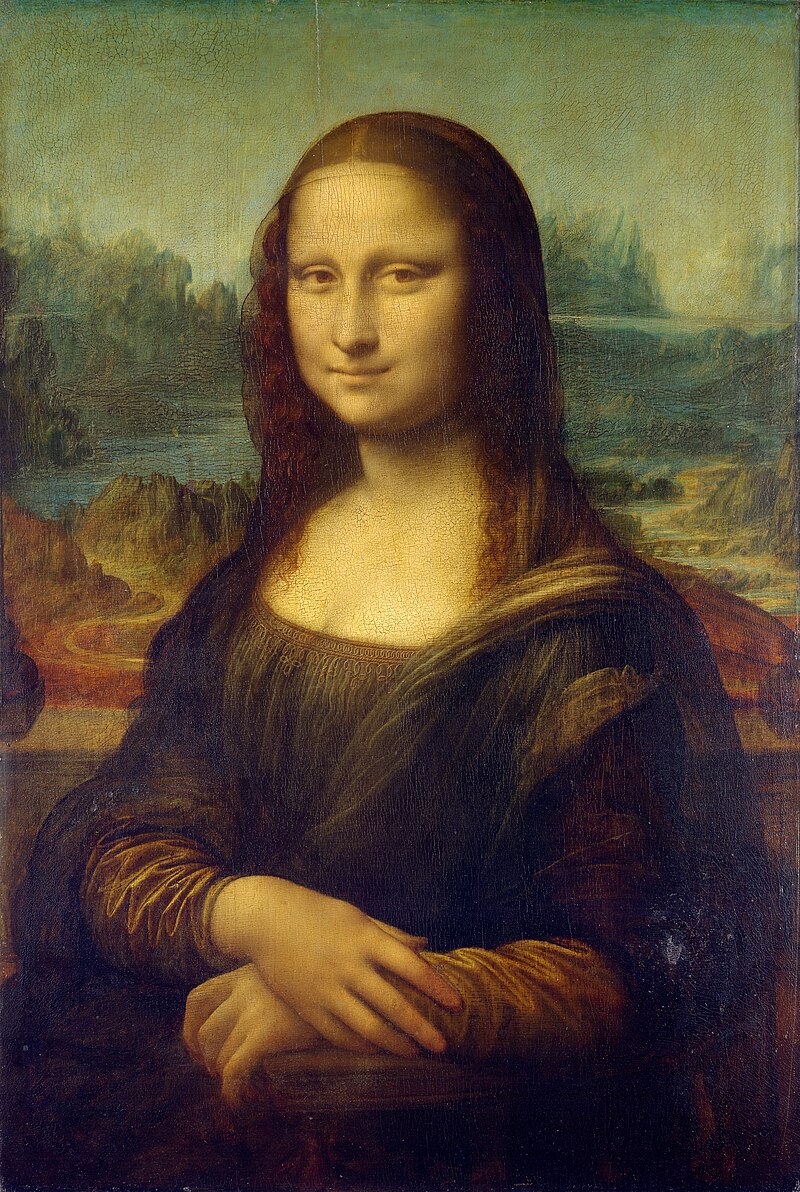Visual Criticism: Leonardo da Vinci's Mona Lisa
Visual Analysis
Visual Analysis: Leonardo da Vinci's Mona Lisa
1. Visual Elements and Meanings
- The genre of the Mona Lisa is a portrait, which entails that the figure takes up most of the space in the painting.
- It can be identified as an iconic sign because it visually looks like what it represents - a noblewoman.
- Overall tone of the painting seems calm, which is due to the cool and earthy color palette used by da Vinci.
- The natural landscape in the background can be identified as a synecdoche, since it is inferred that it is only a part of a much larger landscape. Only a part of it is actually included in the limitations of the portrait dimensions.
- Even though the clothing of the woman in the Mona Lisa is generally darker than the natural landscape, its earthy brown tones connect her figure to the natural world.
- da Vinci places great emphasis on the clothing, including its folds and wrinkles, and one interpretation the viewer can gain is that the woman represented in Mona Lisa is a noblewoman.
- da Vinci's attention to his depiction of the figure's skin is interesting, which is especially apparent in the hands, as it is portrayed as being very smooth and unblemished.
- The figure's facial expression is also intriguing, as there seems to be a subtle curve in her mouth, but at the same time her expression seems quite serious, which creates an ambiguous mood.
2. Cultural Implications
- Leonardo da Vinci's Mona Lisa is one of the most widely recognized paintings, but it is interesting that it is difficult to trace why exactly so many people recognize it.
- This painting has become a popular culture icon in contemporary society, and one popular point of contemporary discourse is the ambiguous expression of the woman. Some viewers note how her expression looks as if she is smiling, or "knows something that you don't know". This speculation creates intrigue in the eyes of the general audience and extends the image's relevance.
- In terms of its place in the 16th Century and the Renaissance period, it can be inferred that the woman in the painting is supposed to represent the "ideal" woman of the period and in Italy.
- It is definitively known that the Mona Lisa is based on a noblewoman named Lisa Gherardini, but that is all that is known about the individual. This brings up the question of who this woman was and what her role was in Italian society during the period.
- It can be assumed that there is nothing out of the ordinary that might identify it as controversial during the period, but it is still interesting that as contemporary viewers, we can never truly know how different people may have perceived the painting contemporarily when da Vinci produced it.
3. My Perspective on Visual Criticism
- I think that Visual Criticism as a form of rhetorical criticism is important because it emphasizes the depth of meaning that can be grasped from a the examination of a visual image.
- I also think that Visual Criticism is not as different in comparison to textual criticism because in actuality, the plurality of perspectives or ideas about a visual image is likely just as large as in textual pieces. Each viewer or reader can have a different perspective about the piece they are examining
- One detriment of visual criticism is that it is difficult to focus solely on the image at hand rather than searching for context because sometimes it seems that the depth of meaning can be slightly limited
Sources:
https://en.wikipedia.org/wiki/Mona_Lisa

Comments
Post a Comment